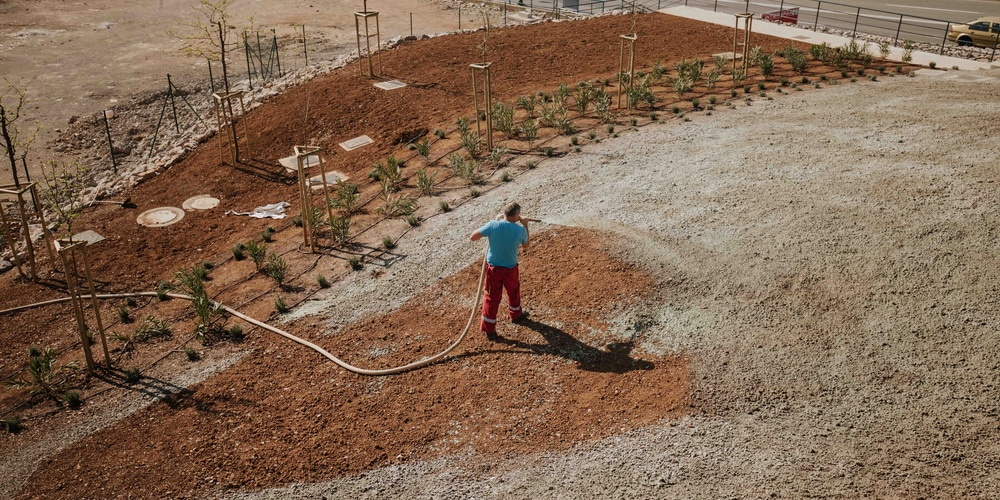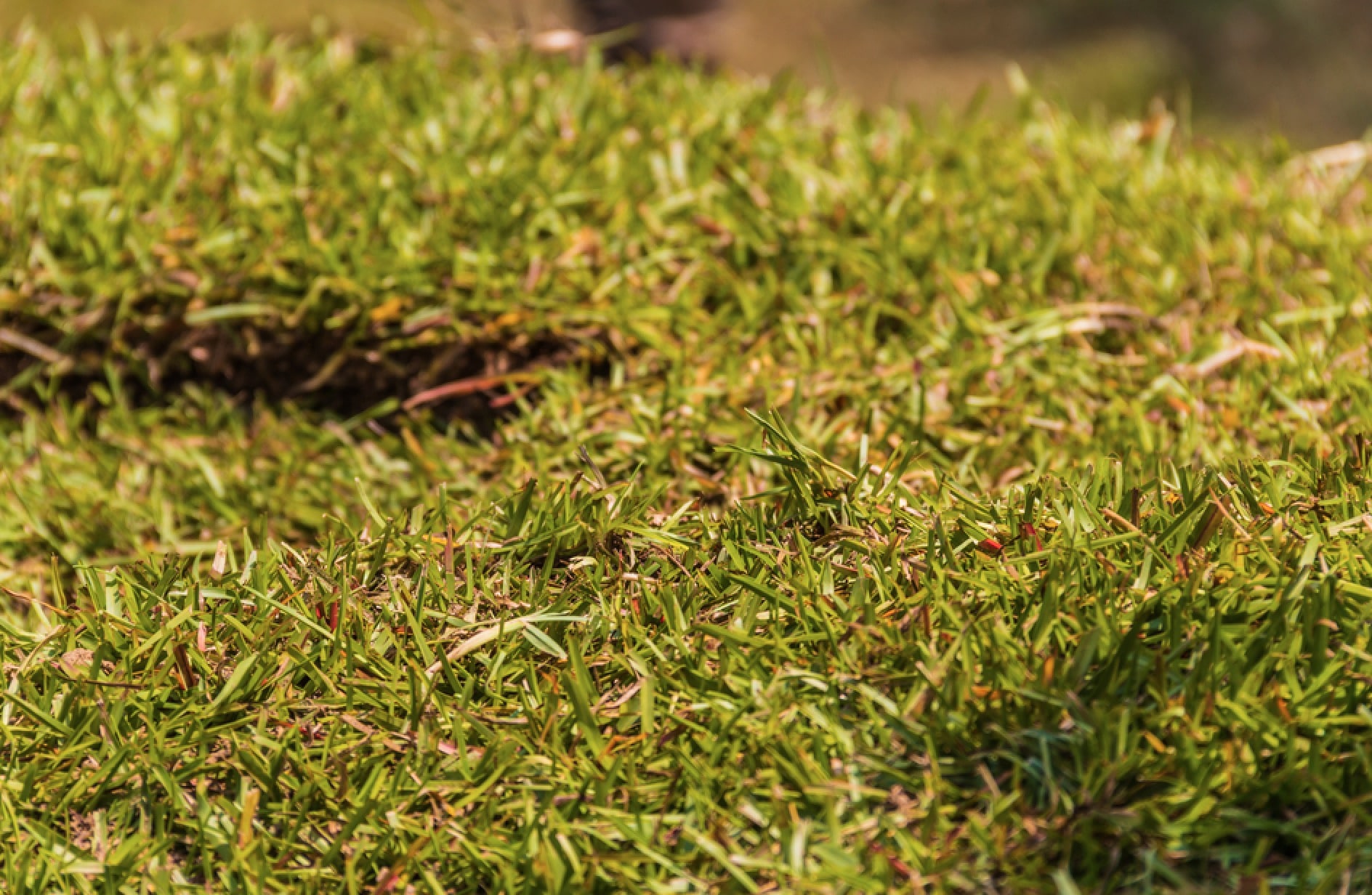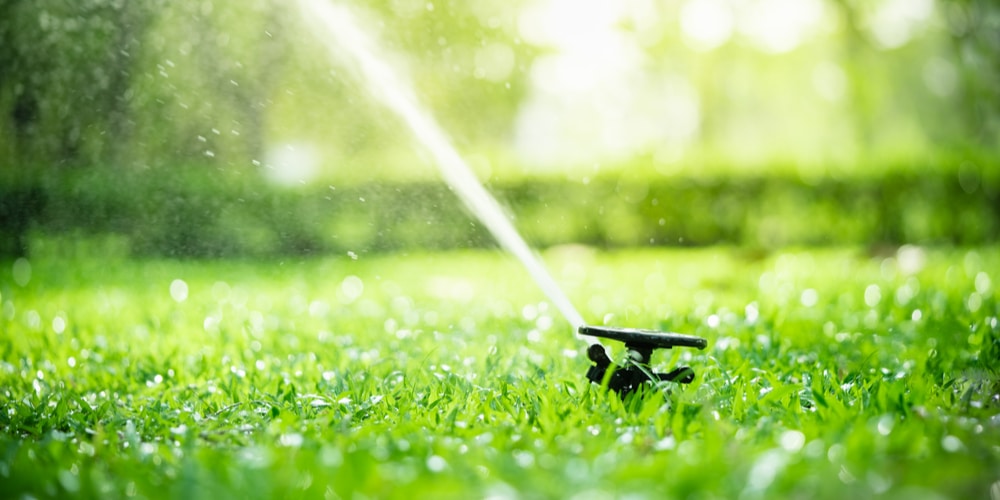What Erosion Does to Your Yard
Erosion is a natural process, but when it occurs unchecked, it can lead to significant environmental impacts. Below are key points to grasp the severity of erosion:
- Soil degradation: Erosion can strip away the topsoil, which is the most fertile layer, depleting essential nutrients needed for plant growth.
- Water pollution: As soil erodes, it can carry pesticides and fertilizers into nearby waterways, contaminating them and harming aquatic life.
- Reduced agricultural productivity: Erosion can lead to lower crop yields as it affects soil quality and depth, which are critical for farming operations.
- Infrastructure damage: The removal of land can undermine building foundations and roadways, leading to costly repairs and maintenance.
Erosion impacts go beyond the loss of soil; they influence the broader ecosystem and human structures. Your role in soil conservation, such as using grass seed for erosion control, can have profound effects on maintaining ecological balance and protecting property.
Using Grass Seed for Erosion Control
Erosion control with grass seed is a practical approach to maintaining soil stability and preventing soil loss. In deploying this technique, it’s essential to choose appropriate grass types and prepare the soil effectively for seeding success.
Types of Grasses Suitable for Erosion Control
- Cool-Season Grasses: Ideal for temperate climates.
- Perennial Ryegrass: Known for quick germination and establishing a fast cover.
- Tall Fescue: Develops a dense network of roots, beneficial for soil stabilization.
- Kentucky Bluegrass: Forms a sod that effectively holds soil in place.
- Warm-Season Grasses: Best for warmer regions.
- Bermuda Grass: Tolerates drought well and forms a thick sod.
- Buffalo Grass: Requires minimal water and low maintenance.
By selecting the right grass for your climate and specific soil conditions, you can maximize erosion control. For instance, perennial ryegrass establishes quickly, making it a top choice for rapid ground cover.
Soil Preparation for Seeding
- Test the Soil: Determine pH and nutrient levels to tailor your soil amendments.
- Remove Debris: Clear the area of rocks, roots, and other obstructions.
- Cultivate: Loosen the soil to a suitable depth to promote root development.
- Add Amendments: Apply organic matter or fertilizer as needed to enrich the soil.
- Smooth the Area: Ensure an even surface for uniform seed coverage and water infiltration.
Proper soil preparation is crucial, as a well-prepared seedbed promotes healthy, deep-rooted grass that resists erosion effectively. Remember to keep the soil moist after planting to encourage germination and growth.
Grass Seeding Techniques

When combating soil erosion, selecting the appropriate grass seeding technique tailored to your landscape can lead to successful vegetation establishment and soil stabilization.
Hydroseeding
Hydroseeding is a sophisticated method where a slurry containing grass seed, mulch, fertilizer, and water is sprayed over prepared soil. This technique offers several advantages:
- Uniform Seed Distribution: Ensures even distribution of seeds, reducing the risk of bare spots.
- Rapid Germination: The protective mulch layer facilitates a greenhouse effect, expediting seed germination.
Research indicates that hydroseeding constitutes a sustainable approach, particularly in challenging environments where soil stabilization is a critical concern.
Broadcast Seeding
Broadcast seeding is a cost-effective and straightforward technique that can be performed manually or with a mechanical spreader. It involves scattering seed over the soil surface. Key points for broadcast seeding include:
- Covering Seeds: Lightly rake the area to cover seeds with a thin layer of soil.
- Seed-to-Soil Contact: Important for successful germination—pressing down with a roller after sowing can be beneficial.
Relevant information on broadcast seeding can be found in guidelines from Pennington that highlight the importance of preparing the soil and applying a starter fertilizer for optimal growth on slopes and hillsides.
Maintenance Practices After Seeding
After establishing grass seed for erosion control, consistent and correct maintenance practices are crucial in ensuring the new growth stabilizes the soil effectively. Here are the targeted steps you need to undertake to support the young grass in its critical development stages.
Watering
- Frequency and Volume: Initially, keep the seeded area evenly moist but not oversaturated to promote germination. Water lightly, preferably twice a day, until sprouts become visible.
- Adjustments: Once germination occurs, reduce the frequency but increase the volume to encourage deeper root growth, which is vital for erosion control.
Fertilizing
- Starter Fertilizer: Apply starter fertilizer at seeding to boost growth. Subsequent applications should be based on the recommendations on the seed package or as advised by a local nursery.
- Follow-Up: About three to four weeks post germination, a second application of fertilizer might be necessary to support the young grasses as they establish.
Mowing
- Height: Do not mow until the grass is at least 3 inches tall and ensure you are not removing more than one-third of the grass blade to avoid stressing the plants.
- Technique: Use a sharp blade to make clean cuts, which will help the grass recover and grow back more quickly.
Monitoring and Assessing Erosion Control Effectiveness
Erosion control using grass seed is a dynamic process, and its effectiveness hinges on regular monitoring and assessment. Your ability to evaluate the success of grass coverage is critical in maintaining soil stability. Here are key strategies for tracking effectiveness:
- Visual Inspections: Regularly observe the seeded areas. Look for signs of emerging seedlings and mature grass, which can indicate successful stabilization. Also, be vigilant for bare patches where seeds may not have germinated.
- Percentage Cover: Assessing the percentage of ground cover is vital. A healthy grass coverage is typically above 70%. You can use a simple grid method by visually estimating how much of the area within a square-foot grid is covered by vegetation.
- Erosion Markers: Installing erosion pins or stakes at various locations can help you measure soil loss or deposition over time. Place these markers perpendicular to the slope and record their exposed length at set intervals.
- Photographic Records: Take photographs from the same positions at regular intervals. This helps create a time-lapse of sorts, illustrating how well the grass is establishing and controlling erosion.
- Soil Testing: Occasionally test soil for nutrients and compaction, as healthy soil promotes robust grass growth, which in turn protects against erosion.
Frequently Asked Questions
Erosion control using grass seed on slopes and hills requires careful selection of grass types and adherence to best practices for planting and maintenance.
What are the best practices for sowing grass seed to prevent soil erosion on a slope?
- Prepare the soil by removing debris and loosening compacted areas.
- Choose grass seeds like ryegrass or buffalo grass for quick germination and growth to anchor the soil.
Which types of deep-rooted grass are most effective for erosion control?
Deep-rooted grasses such as Tall Fescue are revered for their ability to hold soil and enhance slope stability due to their extensive root systems.
Can you recommend any low-maintenance grass varieties suitable for controlling erosion on slopes?
Buffalo grass stands out as a low-maintenance option that requires minimal watering and mowing, making it suitable for stabilizing sloped areas with little upkeep.
How does one prevent grass seed from being washed away by rain before it can establish?
- Use erosion control blankets or mats to protect seeds from heavy rains.
- Employ a hydroseeding technique which binds the seeds to the soil using a slurry of mulch and water.
Should an erosion control blanket be applied before or after planting grass seed for stabilizing soil?
An erosion control blanket should be applied after planting grass seed, as it helps maintain soil moisture and provides protection against wind and water erosion.
Are there any particular grass seeds that are recommended for erosion control in regions with climates like Texas and Florida?
In warmer climates like Texas and Florida, Bermuda Rye and other drought-tolerant varieties are recommended for their resilience to heat and ability to establish quickly for effective soil stabilization.
Last update on 2024-04-30 / Affiliate links / Images from Amazon Product Advertising API




